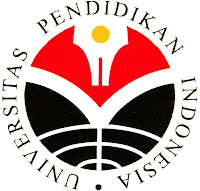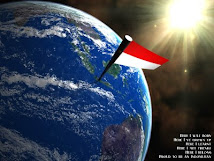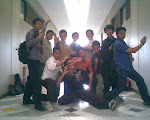Monday 20 April 2009
Earth and Planetary Astrophysics
Diposting oleh
Astrophysics Boy
di
13:30:00
0
komentar
![]()
![]()
Label: Astrophysics Laboratory
Saturday 18 April 2009
Kumpulan Kalimat-Kalimat wejangan dari Albert Einstein {Stanford University}
A[Note: This list of Einstein quotes was being forwarded around the Internet in e-mail, so I decided to put it on my web page. I'm afraid I can't vouch for its authenticity, tell you where it came from, who compiled the list, who Kevin Harris is, or anything like that. Still, the quotes are interesting and enlightening.]
Collected Quotes from Albert Einstein
- "Any intelligent fool can make things bigger, more complex, and more violent. It takes a touch of genius -- and a lot of courage -- to move in the opposite direction."
- "Imagination is more important than knowledge."
- "Gravitation is not responsible for people falling in love."
- "I want to know God's thoughts; the rest are details."
- "The hardest thing in the world to understand is the income tax."
- "Reality is merely an illusion, albeit a very persistent one."
- "The only real valuable thing is intuition."
- "A person starts to live when he can live outside himself."
- "I am convinced that He (God) does not play dice."
- "God is subtle but he is not malicious."
- "Weakness of attitude becomes weakness of character."
- "I never think of the future. It comes soon enough."
- "The eternal mystery of the world is its comprehensibility."
- "Sometimes one pays most for the things one gets for nothing."
- "Science without religion is lame. Religion without science is blind."
- "Anyone who has never made a mistake has never tried anything new."
- "Great spirits have often encountered violent opposition from weak minds."
- "Everything should be made as simple as possible, but not simpler."
- "Common sense is the collection of prejudices acquired by age eighteen."
- "Science is a wonderful thing if one does not have to earn one's living at it."
- "The secret to creativity is knowing how to hide your sources."
- "The only thing that interferes with my learning is my education."
- "God does not care about our mathematical difficulties. He integrates empirically."
- "The whole of science is nothing more than a refinement of everyday thinking."
- "Technological progress is like an axe in the hands of a pathological criminal."
- "Peace cannot be kept by force. It can only be achieved by understanding."
- "The most incomprehensible thing about the world is that it is comprehensible."
- "We can't solve problems by using the same kind of thinking we used when we created them."
- "Education is what remains after one has forgotten everything he learned in school."
- "The important thing is not to stop questioning. Curiosity has its own reason for existing."
- "Do not worry about your difficulties in Mathematics. I can assure you mine are still greater."
- "Equations are more important to me, because politics is for the present, but an equation is something for eternity."
- "If A is a success in life, then A equals x plus y plus z. Work is x; y is play; and z is keeping your mouth shut."
- "Two things are infinite: the universe and human stupidity; and I'm not sure about the the universe."
- "As far as the laws of mathematics refer to reality, they are not certain, as far as they are certain, they do not refer to reality."
- "Whoever undertakes to set himself up as a judge of Truth and Knowledge is shipwrecked by the laughter of the gods."
- "I know not with what weapons World War III will be fought, but World War IV will be fought with sticks and stones."
- "In order to form an immaculate member of a flock of sheep one must, above all, be a sheep."
- "The fear of death is the most unjustified of all fears, for there's no risk of accident for someone who's dead."
- "Too many of us look upon Americans as dollar chasers. This is a cruel libel, even if it is reiterated thoughtlessly by the Americans themselves."
- "Heroism on command, senseless violence, and all the loathsome nonsense that goes by the name of patriotism -- how passionately I hate them!"
- "No, this trick won't work...How on earth are you ever going to explain in terms of chemistry and physics so important a biological phenomenon as first love?"
- "My religion consists of a humble admiration of the illimitable superior spirit who reveals himself in the slight details we are able to perceive with our frail and feeble mind."
- "Yes, we have to divide up our time like that, between our politics and our equations. But to me our equations are far more important, for politics are only a matter of present concern. A mathematical equation stands forever."
- "The release of atom power has changed everything except our way of thinking...the solution to this problem lies in the heart of mankind. If only I had known, I should have become a watchmaker."
- "Great spirits have always found violent opposition from mediocrities. The latter cannot understand it when a man does not thoughtlessly submit to hereditary prejudices but honestly and courageously uses his intelligence."
- "The most beautiful thing we can experience is the mysterious. It is the source of all true art and all science. He to whom this emotion is a stranger, who can no longer pause to wonder and stand rapt in awe, is as good as dead: his eyes are closed."
- "A man's ethical behavior should be based effectually on sympathy, education, and social ties; no religious basis is necessary. Man would indeeded be in a poor way if he had to be restrained by fear of punishment and hope of reward after death."
- "The further the spiritual evolution of mankind advances, the more certain it seems to me that the path to genuine religiosity does not lie through the fear of life, and the fear of death, and blind faith, but through striving after rational knowledge."
- "Now he has departed from this strange world a little ahead of me. That means nothing. People like us, who believe in physics, know that the distinction between past, present, and future is only a stubbornly persistent illusion."
- "You see, wire telegraph is a kind of a very, very long cat. You pull his tail in New York and his head is meowing in Los Angeles. Do you understand this? And radio operates exactly the same way: you send signals here, they receive them there. The only difference is that there is no cat."
- "One had to cram all this stuff into one's mind for the examinations, whether one liked it or not. This coercion had such a deterring effect on me that, after I had passed the final examination, I found the consideration of any scientific problems distasteful to me for an entire year."
- "...one of the strongest motives that lead men to art and science is escape from everyday life with its painful crudity and hopeless dreariness, from the fetters of one's own ever-shifting desires. A finely tempered nature longs to escape from the personal life into the world of objective perception and thought."
- "He who joyfully marches to music rank and file, has already earned my contempt. He has been given a large brain by mistake, since for him the spinal cord would surely suffice. This disgrace to civilization should be done away with at once. Heroism at command, how violently I hate all this, how despicable and ignoble war is; I would rather be torn to shreds than be a part of so base an action. It is my conviction that killing under the cloak of war is nothing but an act of murder."
- "A human being is a part of a whole, called by us _universe_, a part limited in time and space. He experiences himself, his thoughts and feelings as something separated from the rest... a kind of optical delusion of his consciousness. This delusion is a kind of prison for us, restricting us to our personal desires and to affection for a few persons nearest to us. Our task must be to free ourselves from this prison by widening our circle of compassion to embrace all living creatures and the whole of nature in its beauty."
- "Not everything that counts can be counted, and not everything that can be counted counts." (Sign hanging in Einstein's office at Princeton)
Diposting oleh
Astrophysics Boy
di
13:41:00
0
komentar
![]()
![]()
Wednesday 15 April 2009
Nobel Fisika Indonesia

The Nobel Prize in Physics 1911
Wilhelm Wien
| Wilhelm Wien | |
|---|---|
 | |
| Born | Wilhelm Carl Werner Otto Fritz Franz Wien 13 January 1864(1864-01-13) Fischhausen, East Prussia |
| Died | 30 August 1928(1928-08-30) (aged 64) Munich, Germany |
| Nationality | German |
| Fields | Physics |
| Institutions | University of Giessen University of Würzburg University of Munich RWTH Aachen |
| Alma mater | University of Göttingen University of Berlin |
| Doctoral advisor | Hermann von Helmholtz |
| Doctoral students | Karl Hartmann Gabriel Holtsmark |
| Known for | Blackbody radiation Wien's law |
| Notable awards | Nobel Prize for Physics (1911) |
| Spouse | Luise Mehler (1898) |
Career
Presentation Speech
Sumber:
Wikipedia
Nobel Prize Org.
Disusun Ulang Oleh;
Arip Nurahman
Pendidikan Fisika, FPMIPA. Universitas Pendidikan Indonesia
&
Follower Open Course Ware at MIT-Harvard University, Cambridge. USA.
Semoga Bermanfaat dan Terima Kasih
Diposting oleh
Astrophysics Boy
di
22:33:00
0
komentar
![]()
![]()
Sunday 12 April 2009
Nobel Fisika Indonesia
Johannes Diderik van der Waals
 | |
| Born | 23 November 1837(1837-11-23) Leiden, Netherlands |
| Died | 8 March 1923(1923-03-08) (aged 85) Amsterdam, Netherlands |
| Nationality | Netherlands |
| Fields | Physics |
| Institutions | University of Amsterdam |
| Alma mater | University of Leiden |
| Doctoral advisor | Pieter Rijke |
| Doctoral students | Diederik Korteweg |
| Known for | Equation of state, intermolecular forces |
| Notable awards | Nobel Prize for Physics (1910) |
Biografi

The Nobel Prize in Physics 1910
Presentation Speech
These two factors become more and more pronounced with increasing compression of the gas. At a sufficiently high pressure, however, the gas becomes liquid, unless the temperature exceeds a certain value, the critical temperature as it is termed. Van der Waals showed that it is possible to apply the same considerations and calculations to liquids as to gases. When the temperature of a liquid is raised to beyond the critical temperature without the liquid being allowed to volatilize, it is in fact converted continuously from the liquid to the gaseous form; and close to the critical temperature it is impossible to distinguish whether it is liquid or gas.
Professor Van der Waals. The Royal Academy of Sciences has awarded you this year's Nobel Prize for Physics in recognition of your pioneering studies on the physical state of liquids and gases.
Sumber:
Wikipedia
Nobel Prize Org.
Disusun Ulang Oleh;
Arip Nurahman
Pendidikan Fisika, FPMIPA. Universitas Pendidikan Indonesia
&
Follower Open Course Ware at MIT-Harvard University, Cambridge. USA.
Semoga Bermanfaat dan Terima Kasih
Diposting oleh
Astrophysics Boy
di
22:31:00
0
komentar
![]()
![]()
Label: Arip Nurahman, Central for Research and Development for Winning Nobel Prize in Physics at Indonesia, Guru dan Dosen Profesional
Friday 10 April 2009
Nobel Fisika Indonesia
 |  |
| Italy | Germany |
| Marconi Wireless Telegraph Co. Ltd. London, United Kingdom | Strasbourg University Strasbourg, Alsace, then Germany |
| b. 1874 d. 1937 | b. 1850 d. 1918 |
Photos: Copyright © The Nobel Foundation

The Nobel Prize in Physics 1909
Presentation Speech
Guglielmo Marconi (25 April 1874 – 20 Juli 1937) adalah seorang insinyur listrik Italia dan peraih hadiah Nobel, terkenal setelah mengembangkan suatu sistem telegrafi tanpa kabel yang dikenal sebagai "radio". Ia menerimanya bersama Karl Braun tahun 1909.
Guglielmo Marconi lahir di Bologna, Italia pada tanggal 25 April 1874, anak laki-laki kedua dari Giuseppe Marconi, seorang pria Italia kaya raya dan Annie Jameson yang berdarah Irlandia. Dia menyelesaikan pendidikannya di Livorno.
Guglielmo Marconi menikah dengan Maria Cristina Bezzi-Scali pada tanggal 15 Juni 1927 dan mempunyai seorang anak perempuan yang bernama Maria Elettra Elena Anna Marconi.
Marconi wafat pada tanggal 20 Juli 1937 di Roma, Italia.
Guglielmo Marconi (1874-1937) Lahir pada tahun 1874 di Bologna, Itali. Penemu radio ini dapat pendidikan privat dari seorang guru. Tahun 1894 tatkala usianya menginjak dua puluh, Marconi baca percobaan-percobaan yang dilakukan oleh Heinrich Hertz beberapa tahun sebelumnya. Percobaan-percobaan ini dengan gamblang mendemonstrasikan adanya gelombang elektromagnetik yang tak tampak oleh mata, bergerak lewat udara dengan kecepatan suara.
Marconi lantas tergugah dengan ide bahwa gelombang ini bisa dimanfaatkan mengirim tanda-tanda melintasi jarak jauh tanpa lewat kawat yang menyediakan banyak kemungkinan berkembangnya komunikasi yang tak bisa dijangkau telegram. Misalnya, dengan cara ini berita-berita dapat dikirim ke kapal di tengah laut.
Tahun 1895, hanya setahun kerja keras, Marconi berhasil memprodusir peralatan yang diperlukan. Tahun 1896 dia memperagakan alat penemuannya di Inggris dan memperoleh hak paten pertamanya untuk penemuan ini. Marconi bergegas mendirikan perusahaan dan "Marconi" pertama dikirim tahun 1898. Tahun berikutnya dia sudah sanggup kirim berita tanpa lewat kawat menyeberang selat Inggris. Meskipun patennya yang terpenting diperolehnya tahun 1900, Marconi meneruskan pembuatan dan mempatenkan banyak penyempurnaan-penyempurnaan atas dasar penemuannya sendiri. Di tahun 1901 dia berhasil mengirim berita radio melintasi Samudera Atlantik, dari Inggris ke Newfoundland.
Makna penting dari penemuan barunya secara dramatis dilukiskan di tahun 1909 tatkala kapal S.S. Republic rusak akibat tabrakan dan tenggelam ke dasar laut. Berita radio amat membantu, semua penumpang bisa diselamatkan kecuali enam orang. Pada tahun yang sama Marconi berhasil meraih Hadiah Nobel untuk penemuannya. Dan pada tahun berikutnya dia berhasil mengirim berita radio dari Irlandia ke Argentina, suatu jarak yang lebih dari 6000 mil.
Semua berita ini dikirim lewat tanda-tanda sistem kode Marconi. Sebagaimana diketahui, suara itu dapat dikirim lewat radio, tetapi hal ini baru bisa terlaksana sekitar tahun 1915. Penyiaran radio dalam skala komersial baru mulai awal tahun 20-an, tetapi kepopulerannya dan arti pentingnya tumbuh dengan amat cepatnya.
Sebuah penemuan yang hak patennya punya harga tinggi dengan sendirinya menimbulkan pertentangan di pengadilan. Tetapi, rupa-rupa tuntutan lewat pengadilan sirna melenyap sesudah tahun 1914 tatkala pengadilan mengakui hak-hak Marconi. Pada tahun berikutnya, Marconi melakukan pula penyelidikan penting di bidang gelombang pendek dan komunikasi microwave. Dia menghembuskan nafas terakhir di Roma tahun 1937.
Selain Marconi menjadi kesohor selaku penemu, jelas pula pengaruhnya tak diragukan dalam hal arti penting radio dan hal-hal yang berkaitan dengan itu. Marconi tidak menemukan televisi. Tetapi, penemuan radionya merupakan pembuka jalan penting buat televisi, karena itu adalah layak menganggap Marconi punya saham juga dalam pengembangan televisi.
Jelas, komunikasi tanpa kawat punya makna teramat penting dalam dunia modern. Ini bermanfaat amat buat pengiriman berita, untuk hiburan, untuk keperluan militer, untuk penyelidikan ilmiah, untuk tugas-tugas kepolisian, dan lain-lain keperluan. Meskipun untuk beberapa hal telegram (yang sudah diketemukan orang lebih dari setengah abad sebelumnya) boleh dibilang punya kegunaan juga, penggunaan radio secara besar-besaran betul-betul tak tertandingkan. Dia bisa mencapai mobil, kapal di lautan, pesawat yang sedang mengudara, bahkan pesawat ruang angkasa. Jelas merupakan penemuan lebih penting ketimbang tilpun karena berita-berita yang dikirim via tilpun dapat pula dikirim lewat radio, lagi pula pesan-pesan lewat radio dapat dikirim ke tempat-tempat yang tak bisa dicapai tilpun.
Karl Ferdinand Braun (lahir di Fulda, 6 Juni 1850 – meninggal di New York, 20 April 1918 pada umur 67 tahun) adalah seorang fisikawan Jerman.
Braun belajar di Universitas Marburg dan menerima gelar di Universitas Berlin pada tahun 1872. Ia menjadi direktur di Lembaga Fisika dan profesor fisika di Strasbourg (1895).
Pada tahun 1897, ia membuat oskiloskop tabung sinar katoda pertama. Teknik ini digunakan oleh sebagian besar peralatan TV dan monitor komputer. Tabung katode masih disebut "tabung Braun" (Braunsche Röhre) di negara penutur bahasa Jerman (dan di Jepang: Buraun-kan).
Pada tahun 1909 Braun menerima Penghargaan Nobel dalam Fisika dengan Guglielmo Marconi untuk "sumbangan pada pengembangan telegrafi nirkabel."
Pada awal Perang Dunia I Braun pindah ke Amerika Serikat untuk mempertahankan stasiun nirkabel Jerman yang terletak di Sayville (Long Island) terhadap serangan oleh Marconi Corporation yang dikendalikan Inggris (saat itu Amerika Serikat belum terjun dalam perang).
Braun meninggal di rumahnya di Brooklyn sebelum perang berakhir, pada tahun 1918.
Karier dan Perjalanan Hidupnya
Karl Ferdinand Braun dilahirkan pada tanggal 6 Juni 1850 di Jerman. Ayahnya seorang pegawai pengadilan di Fulda (Jerman).Braun memiliki sifat skeptis dan serba ingin tahu yang kuat tentang kejadian-kejadian alam yang dijumpainya. Dia sangat tertarik dengan ilmu fisika dan filsafat. Setelah menamatkan sekolah menengah, ia cenderung mempelajari filsafat dan berhasil meraih gelar doktor dibidang itu. Namun hobinya di bidang fisika tidak dia tinggalkan.
Pada tahun 1872-1885, sembari menggeluti bidang fisika, dia menjadi guru fisika di sekolah menengah di Leipzig, kemudian menjadi dosen di Marburg, Strasbourg dan Karlsruhe. Selain mengajar, dia juga gemar menulis artikel ilmu pengetahuan modern dalam mingguan Die Fligenden Blatter.
Selain itu, dia juga menulis buku yang berjudul Der Junge Mathematiker und Naturforscher. Braun senantiasa menemukan hal-hal yang baru, diantaranya, ia mengembangkan sejenis pirometer listrik guna mengukur suhu yang tinggi, menetukan kenaikan suhu bumi melalui lubang-lubang galian yang dalam dan menemukan dampak pelurus pada pada semikonduktor yang merupakan dasar bagi elektronika modern. Berkat jasanya pula, maka transistor dan dioda dapat berfungsi. Selama hidupnya di Eropa (Jerman) ia jarang berada dirumah dalam waktu yang lama.
Braun menikah pada tahun 1885 dan setelah pernikahannya, ia melakukan riset keliling Eropa, Amerika dan gurun Sahara di Afrika. Sepulang dari beberapa negara pada tahun 1897, ia menayangkan temuannya yang cukup modern saat itu.
Temuan itu tak lain adalah tabung gambar yakni tabung yang mampu menyerap sinyal-sinyal yang diwujudkan dalam bentuk gambar. Temuan itu ia populerkan dan di publikasikan di depan para mahasiswa Universitas Strasbourg.
Penjelasan mengenai tabung gambar ini adalah bahwa tabung gambar tersebut dapat menampilkan arus bolak-balik dari pusat pembangkit listrik Strasbourg secara langsung berupa gelombang sinus yang kemudian hari diterima sebagai lambang arus bolak-balik, muncul pada permukaan suatu Polygon (bersegi banyak) berputar yang memantul. Sinar datang dari sebuah tabung berbentuk alat pemukul, dari katoda atau elektron tabung sinar. Kekuatan magnetis mengarahkan elektron-elektron yang terkumpul, yaitu partikel-partikel inti yang sangat cepat, yang pada saat itu tampak tidak dapat dikendalikan, melalui tabung gelas. Titik-titik sinar di ujung tabung kemudian secara otomatis membentuk garis-garis gelombang menghasilkan gambar yang persis sama dengan arus sinkron bidang-bidang magnetis yang menggoyangkan cahaya elektron. Sesungguhnya itulah sistem bekerjanya televisi dewasa ini yakni elektron-elektron dengan kecepatan tinggi disalurkan melalui tabung yang hampir kosong, memantulkan cahaya membentuk titik-titik secara otomatis kemudian dipusatkan oleh bidang-bidang magnetis untuk membentuk gambar, inilah yang kita sebut televisi.
Jadi, tabung yang ada intinya merupakan arus bolak-balik merupakan elemen pokok dan esensial bagi teknologi pertelevisian. Sampai kini tabung tersebut masih dikenal sebagai Tabung Braun. Selain untuk televisi, juga digunakan untuk berbagai perlengkapan medis, komputer bahkan perlengkapan radar.
Dengan beberapa temuannya itu pula Braun mendirikan perusahaan Braun-Siemens Gesellschaft dan Telefunken di Berlin. Kecenderungannya pun kembali ia buktikan pada tahun 1905 ia mampu memanfaatkan hipotesis yang dikembangkan oleh Maxwell bahwa untuk mendeteksi semua karakter unsur gelombang listrik dalam cahaya yang terlihat mungkin saja dapat dilakukan. Pada tahun 1905-1909 ia bersama ilmuwan Italia bernama Yuglielmo Marconi membantu mengembangkan telegraf tanpa kawat dimana telegraf sebelumnya ditemukan oleh Marconi hanya dapat menyampaikan osilasi (getaran) yang terendam yang sangat membatasi jangkauan siarannya.
Maka, dengan kepiawaiannya, Braun akhirnya berhasil memecahkan masalah tersebut dengan dua kondensor dan sebuah gulungan kawat induksi dalam sirkuit osilasi tertutup guna mencegah getaran-getaran elektromagnetik yang hilang dalam perjalanan udara. Hal ini mendorong osilasi-osilasi yang juga dikenal sebagai umpan balik. Temuan itu membuat pemancar menjadi lebih kuat dibandingkan dengan temuan Marconi sebelumnya.
Atas jasanya dala dunia telegraf, maka pada tahun 1909 Braun bersama Marconi memperoleh hadiah Nobel. Sebetulnya Braun patut memperoleh Nobel pada tahun-tahun sebelum ia menemukan sistem Telegraf, namun dunia pada saat ini belum secara pasti memandang bahwa temuan tabung gambar merupakan nenek moyang televisi dan perlengkapan lainnya. Namun begitu, hadiah Nobel yang disandang atas jasa temuan bidang telegraf membuat dirinya kokoh sebagai ilmuwan sejati.
Pada tahun 1911 ia membangun sebuah stasiun di Sayville. Pada tahun 1914 ia bekerja sama dengan Count Zeppelin, mengembangkan sambungan-sambungan radio untuk navigasi penerbangan. Pada bulan Desember 1904 ia melawat ke Amerika Serikat untuk tujuan bisnis alat-alat teknologi temuannya. Sayangnya selang beberapa waktu kemudian Perang Dunia I meletus. Braun terpaksa menetap di Broklyn (USA), ia tidak bisa pulang ke negaranya. Setelah menetap di Amerika Serikat selama empat tahun, Braun meninggal dunia dalam usia 68 tahun tepatnya tanggal 20 April 1918. Sebelum wafat ia sempat menulis sebuah buku yang berjudul Fisika untuk Wanita.
Presentation Speech by the former Rector General of National Antiquities H. Hildebrand, President of the Royal Swedish Academy of Sciences, on December 10, 1909
A man was needed who was able to grasp the potentialities of the enterprise and who could overcome all the various difficulties which stood in the way of the practical realization of the idea. The carrying out of this great task was reserved for Guglielmo Marconi. Even when taking into account previous attempts at this work and the fact that the conditions and prerequisites for the feasibility of this enterprise were already given, the honour of the first trials is nevertheless due, by and large, to Marconi, and we must freely acknowledge that the first success was gained as a result of his ability to shape the whole thing into a practical, usable system, added to his inflexible energy with which he pursued his self appointed aim.
The development of a great invention seldom occurs through one individual man, and many forces have contributed to the remarkable results now achieved. Marconi's original system had its weak points. The electrical oscillations sent out from the transmitting station were relatively weak and consisted of wave-series following each other, of which the amplitude rapidly fell-so-called "damped oscillations". A result of this was that the waves had a very weak effect at the receiving station, with the further result that waves from various other transmitting stations readily interfered, thus acting disturbing at the receiving station. It is due above all to the inspired work of Professor Ferdinand Braun that this unsatisfactory state of affairs was overcome.
Braun made a modification in the layout of the circuit for the despatch of electrical waves so that it was possible to produce intense waves with very little damping. It was only through this that the so-called "long-distance telegraphy" became possible, where the oscillations from the transmitting station, as a result of resonance, could exert the maximum possible effect upon the receiving station. The further advantage was obtained that in the main only waves of the frequency used by the transmitting station were effective at the receiving station. It is only through the introduction of these improvements that the magnificent results in the use of wireless telegraphy have been attained in recent times.
Sumber:
Wikipedia
Nobel Prize Org.
Disusun Ulang Oleh;
Arip Nurahman
Pendidikan Fisika, FPMIPA. Universitas Pendidikan Indonesia
&
Follower Open Course Ware at MIT-Harvard University, Cambridge. USA.
Semoga Bermanfaat dan Terima Kasih
Diposting oleh
Astrophysics Boy
di
22:26:00
0
komentar
![]()
![]()
Label: Arip Nurahman, Central for Research and Development for Winning Nobel Prize in Physics at Indonesia, Guru dan Dosen Profesional
Tuesday 7 April 2009
Indonesian Space Sciences & Technology School
Indonesian Space Sciences & Technology School
By: Arip Nurahman
Department of Physics Education, Faculty of Sciences and Mathematics
Follower Open Course Ware at Massachusetts Institute of Technology
Cambridge, USA
Department of Physics
http://web.mit.edu/physics/
http://ocw.mit.edu/OcwWeb/Physics/index.htm
&
Aeronautics and Astronautics Engineering
http://web.mit.edu/aeroastro/www/
http://ocw.mit.edu/OcwWeb/Aeronautics-and-Astronautics/index.htm


- Liquid Propellants
- Solid Propellants
- Hybrid Propellants
- Tables of Properties
- Thrust
- Conservation of Momentum
- Impulse & Momentum
- Combustion & Exhaust Velocity
- Specific Impulse
- Rocket Engines
- Power Cycles
- Engine Cooling
- Solid Rocket Motors
- Monopropellant Engines
- Staging
- Conic Sections
- Orbital Elements
- Types of Orbits
- Newton's Laws of Motion and Universal Gravitation
- Uniform Circular Motion
- Motions of Planets and Satellites
- Launch of a Space Vehicle
- Position in an Elliptical Orbit
- Orbit Perturbations
- Orbit Maneuvers
- Escape Velocity
The following are the appendices referenced in Parts I, II and III above.
- Example Problems
- Basic Constants
- Atmosphere Properties
- Drag Coefficients
- Propellant Combustion Charts
- Supplement #1: Optimizing Expansion for Maximum Thrust
- Units of Weights and Measures
Braeuning
Diposting oleh
Astrophysics Boy
di
23:01:00
0
komentar
![]()
![]()
Label: Arip Nurahman, Guru dan Dosen Profesional, Indonesian Space Sciences Technology School




















